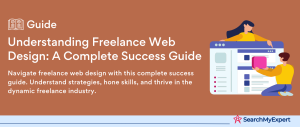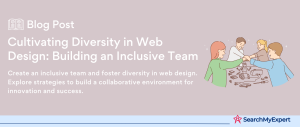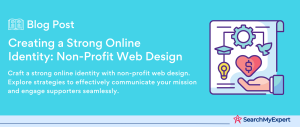Web Design in the Digital Age
Current State and Significance
In the digital cosmos, web design stands as a pivotal pillar, shaping how we interact, communicate, and conduct business. Its importance is monumental, akin to a lighthouse guiding ships in the digital sea. The current state of web design is a vibrant tapestry, interwoven with creativity, technology, and user experience. It’s not just about aesthetics; it’s about creating a digital ecosystem that’s intuitive, engaging, and reflective of the evolving needs of users.
The Speed of Tech Evolution
Technology sprints at a pace that’s both exhilarating and challenging. Every tick of the clock brings new advancements, reshaping the landscape of web design. We’re not just riding the wave; we’re trying to surf ahead of it. These rapid changes dictate that web design is not static but a fluid art, continually adapting to new technologies, user preferences, and digital norms.
The Shift to User-Centric and Immersive Experiences
Today’s web design is a symphony that plays to the tune of the user. It’s no longer about what we can make; it’s about what users need and how they interact with the digital world. The emphasis is on creating immersive, accessible experiences that resonate on a personal level. It’s about building bridges between technology and human experience, ensuring that the web is not just a space but a place where users feel seen, understood, and valued.
Emerging Technologies in Web Design
Artificial Intelligence: The New Frontier
Artificial Intelligence (AI) in web design is like a wizard behind the curtain, powering personalized experiences, automating design tasks, and driving efficiency. AI is not just a tool; it’s a collaborator, enabling designers to focus on creativity while handling the repetitive and mundane. AI-powered chatbots, for instance, are revolutionizing user engagement, offering real-time assistance and personalized interactions.
Augmented and Virtual Realities: The Immersive Web
Imagine stepping into a website, not just clicking through it. That’s the magic of Augmented Reality (AR) and Virtual Reality (VR). These technologies are blurring the lines between the physical and digital worlds, creating web experiences that are not just seen but felt. They open new vistas for creativity, interaction, and storytelling in web design, transforming passive viewers into active participants.
Blockchain: The Backbone of a Decentralized Web
Blockchain is the unsung hero, bringing a new dimension of security, transparency, and user empowerment to web design. In a blockchain-powered web, users have greater control over their data, and transactions are secure and transparent. This technology is fostering a new era of web design, where decentralization, trust, and user autonomy are the cornerstones.
Shifting User Preferences in Web Design
Personalization: The Heart of Modern Web Experiences
User preferences have evolved from a one-size-fits-all to a tailor-made digital couture. Personalization is not just a feature; it’s a necessity. Today’s users expect web interfaces that not only recognize them but also anticipate their needs and preferences. They seek experiences that feel intuitive as if the website was designed with only them in mind. This hyper-personalization requires a deep understanding of user behavior, preferences, and expectations.
Accessibility and Inclusion: Designing for All
The web is for everyone. This universal truth is driving the surge in accessibility and inclusive design practices. Web design is no longer just about aesthetic appeal; it’s about creating digital spaces that are open, accessible, and usable for everyone, regardless of their abilities or disabilities. This shift represents a profound understanding that diversity in user groups is not a challenge but an opportunity to create more enriching, universal web experiences.
The Power of Storytelling in Web Design
Content is king, but context is the kingdom. The increasing demand for content-driven web experiences is steering web design towards storytelling techniques. Users are not just looking for information; they want to be taken on a journey. Storytelling in web design involves weaving a narrative that connects users emotionally with the brand or message. It’s about creating a compelling story that users can engage with, relate to, and be part of.
Design Trends to Watch in Web Design
Minimalism: The Art of Less
In the world of web design, minimalism is a trend that stands out for its focus on simplicity, clean lines, and negative space. It’s a philosophy of less is more. Minimalistic design is not just about reducing elements; it’s about finding the essence of the design. This trend places the user’s needs at the forefront, removing unnecessary distractions and honing in on the core message and functionality.
Micro-Interactions and Animation: Small Details, Big Impact
Micro-interactions and animation are the spices of the web design recipe. They might be small, but their impact on user engagement and interaction is significant. These subtle design elements add life to the interface, making it more intuitive and engaging. Micro-interactions guide users, provide feedback, and enhance the overall user experience, while animation brings a dynamic, lively dimension to the design.
Voice-Activated Interfaces: The Future of Interaction
The potential of voice-activated interfaces in web design is like opening a door to a new dimension of user interaction. As technology advances, voice interfaces are becoming more sophisticated, enabling users to interact with websites through voice commands. This trend is reshaping the way users navigate and interact with web interfaces, making the experience more natural, efficient, and accessible.
Sustainability and Ethics in Web Design
Embracing Sustainable Web Design
The digital world is not immune to the global call for sustainability. Sustainable web design is an emerging ethos, focusing on minimizing the environmental footprint of digital products. This approach involves designing websites that are efficient in resource usage, both in terms of energy and data. It’s about creating digital spaces that are not only beautiful and functional but also gentle on our planet. By optimizing images, streamlining code, and choosing green hosting, web designers play a crucial role in reducing the carbon footprint of the internet.
Ethical Considerations: Privacy and Responsibility
Ethics in web design transcends beyond aesthetic and functional decisions; it delves into the realm of data privacy, user consent, and responsible AI implementation. In an era where data is the new oil, ethical web design is about ensuring that user data is respected and protected. It’s about creating transparent systems where user consent is not just a formality but a fundamental right. Moreover, the responsible implementation of AI in web design calls for a balance between innovation and ethics, ensuring AI serves the user without compromising their rights and dignity.
Web Design as a Catalyst for Social Good
Web design holds immense power in promoting social good and fostering positive change. It’s a platform not just for commerce and communication but also for raising awareness, driving social movements, and building communities. Ethical web design recognizes this power and harnesses it to create websites that are not just commercially successful but also socially responsible. It’s about using design to amplify voices, champion causes, and make a positive impact on society.
The Future Workforce in Web Design
Evolving Skillset for Web Designers
The future beckons web designers with a skillset that is as dynamic as the industry itself. Adaptability, lifelong learning, and collaboration are the cornerstones of this new skillset. As technology evolves, so must the designer. This means staying abreast of the latest trends, continually refining skills, and being open to new ideas and methodologies. Collaboration, especially in a multi-disciplinary context, is increasingly vital, as web design becomes more integrated with other fields like marketing, AI, and user experience.
The Rise of Remote Work and Global Teams
The future of work in web design is not bound by geography. Remote work and geographically dispersed teams are becoming the norm, driven by advancements in communication technology and a shift in work culture. This new work paradigm brings diverse perspectives, fosters global collaboration, and allows for a more flexible work-life balance. It also opens doors to talent from all corners of the globe, enriching the web design industry with a melting pot of ideas and cultures.
Automation and AI: Partners in Design
Automation and AI are not threats to the web design workforce; they are partners. These technologies are poised to transform the role of web designers, automating routine tasks and providing tools for more complex and creative endeavors. AI can assist in generating design elements, analyzing user data for better UX, and even optimizing SEO. However, the human element remains irreplaceable – the creativity, empathy, and understanding of human experience that designers bring to the table are qualities that AI cannot replicate.
The Future Landscape of Web Design
Embracing the Evolution
The journey through the ever-evolving landscape of web design brings us to an exhilarating juncture. We’ve explored the dynamic interplay of technology, user preferences, and ethical practices that shape the digital world. From the personalized, intuitive interfaces to the rise of AI, AR/VR, and the emphasis on sustainability and ethics, the tapestry of web design is rich and complex.
Key Points: A Tapestry of Innovation and Responsibility
- Rapid Technological Advancements:
Web design is continuously transformed by emerging technologies like AI, AR/VR, and blockchain, offering personalized, immersive experiences. - Shifting User Preferences: Users now demand more personalized, accessible, and content-driven experiences, pushing the boundaries of storytelling and user engagement.
- Design Trends:
Trends like minimalism, micro-interactions, and voice-activated interfaces are shaping a more engaging and intuitive web. - Sustainability and Ethics: The need for environmentally friendly and ethically sound practices in web design is paramount, focusing on data privacy, user consent, and responsible AI.
- The Evolving Workforce:
The future of web design lies in adaptability, lifelong learning, and embracing the potential of remote work and AI collaboration.
These elements combine to paint a picture of a field that is not just about creating websites but about crafting experiences, stories, and connections that resonate deeply with users.
A Better Digital Tomorrow
The future of web design is a canvas of limitless possibilities and significant responsibilities. It’s a call to action for designers, developers, and all stakeholders in the digital sphere.
- Embrace New Technologies: Stay at the forefront of emerging technologies. Understand and leverage AI, AR/VR, and blockchain to create innovative and engaging web experiences.
- Adapt to User Preferences: Listen to and understand the evolving needs of users. Create designs that are not just visually appealing but also intuitive, accessible, and personal.
- Champion Sustainable and Ethical Practices: Incorporate sustainability in every aspect of design and uphold the highest ethical standards, especially in terms of data privacy and AI usage.
- Foster Continuous Learning and Collaboration: Cultivate a mindset of lifelong learning and embrace the global, collaborative nature of the web design community.
- Create with Purpose:
Remember that each line of code, each element of design, contributes to the larger narrative of our digital existence. Aim to create web experiences that not only serve functional purposes but also contribute positively to society and the environment.
Conclusion
As we stand at this crossroads, the path ahead for web design is clear – it’s a path of innovation, responsibility, and endless creativity. The challenge is significant, but so are the opportunities. It’s time to step forward with purpose, passion, and a commitment to crafting a digital world that is as sustainable and ethical as it is technologically advanced and user-centric.
Elevate your site with cutting-edge Web Design Agencies.
Table of Contents
Toggle






